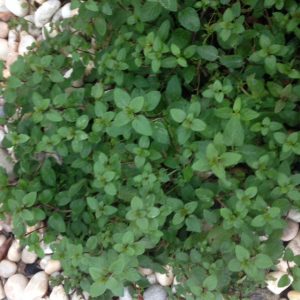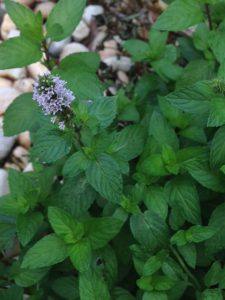
Mint is very easy to grow in the right place, sometimes a little bit too easily. It’s reputation for being aggressive is well deserved. As with any other plant you use in your landscape, you need to be sure you have the right plant for the right place and there just might be such a spot in your garden for mint!
Garden areas with part sun/part shade and moist soil are perfect environments for mint. Like most herbs, it does not require much fertilizer and there are very few insects that bother it. Because mint forms runners where it touches the ground it is an ideal plant to use in areas that need soil stabilization as the dense growth habit will prevent erosion and sediment runoff.
Mint grows rapidly in the right conditions and can spread further than a gardener might want. However, it is not difficult to manage with a little maintenance. Because the plant is herbaceous rather than woody, it can be pulled or trimmed with little effort. Another method to keep it in bounds is to chemically edge using an herbicide on the portions that are growing beyond the bed border. Just keep in mind that if you plan to use your mint in food or drink you should only use chemical products labeled for edible crops and follow all label instructions closely.

There are many different mints available such as chocolate mint, spearmint, and peppermint. Each has a slightly distinct flavor and may have different sized leaves or coloration. Mints are prolific bloomers and are attractive to pollinators such as bees and beneficial wasps.
To read more about mints please see http://gardeningsolutions.ifas.ufl.edu/plants/edibles/vegetables/mint.html
 0
0
